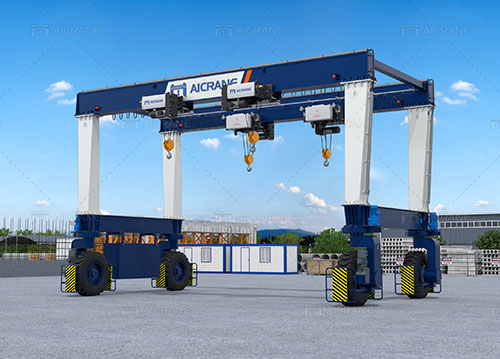
This article explores the functionality, benefits, applications, and considerations of crab steering mode in RTG cranes.
Rubber Tyred Gantry (RTG) cranes are pivotal in container handling operations at ports, terminals, and logistics hubs. Among the various steering modes these cranes offer, the Crab Steering Mode stands out due to its unique ability to move the crane sideways without changing its orientation. This article explores the functionality, benefits, applications, and considerations of crab steering mode in RTG cranes.
Crab steering mode allows all the wheels of an RTG rubber tyred gantry to turn in the same direction, enabling lateral or sideways movement. Unlike conventional steering, where the crane moves forward or backward with turning arcs, crab steering permits a straight side-to-side shift. This mode is named after the movement of crabs, which can effortlessly glide sideways.
The steering system relies on advanced hydraulic or electric steering mechanisms, controlled from the operator’s cabin or remotely. Operators can seamlessly switch between standard steering modes and crab steering depending on operational needs.
Enhanced Maneuverability:
Crab steering allows RTG cranes to move sideways with precision, making it ideal for navigating tight spaces, such as crowded container yards or confined port areas.
Improved Space Utilization:
The ability to move laterally without repositioning the gantry mobile crane saves valuable yard space, optimizing container stacking and arrangement.
Time Efficiency:
By reducing the need for multiple forward-backward movements to align with containers, crab steering speeds up container handling operations.
Operational Flexibility:
Operators can quickly adjust the crane’s position to align with varying container layouts, enhancing adaptability in dynamic port environments.
Reduced Tire Wear:
Smooth lateral movements minimize sharp turns, reducing tire friction and prolonging tire life.
Container Terminals: Efficiently moving between tightly packed container rows.
Intermodal Yards: Handling containers near railway tracks where space is limited.
Shipyards: Maneuvering around dockside equipment and vessels.
Logistics Hubs: Flexible container positioning for streamlined operations.
While crab steering offers numerous advantages, operators and maintenance teams should consider the following:
Training Requirements: Operators need specialized training to master the controls and precision movements associated with crab steering.
Maintenance Needs: The complex steering mechanisms require regular inspections to ensure optimal performance.
Energy Consumption: Lateral movements can increase energy usage, especially if not optimized for specific operational tasks.
Crab steering mode in RTG cranes represents a significant advancement in container handling technology. Its ability to enhance maneuverability, optimize space, and improve operational efficiency makes it an invaluable feature for modern port and logistics operations. By understanding its functions and benefits, operators can maximize the potential of their RTG cranes, ensuring smoother, faster, and more flexible container handling processes.
© 2024 Crivva - Business Promotion. All rights reserved.